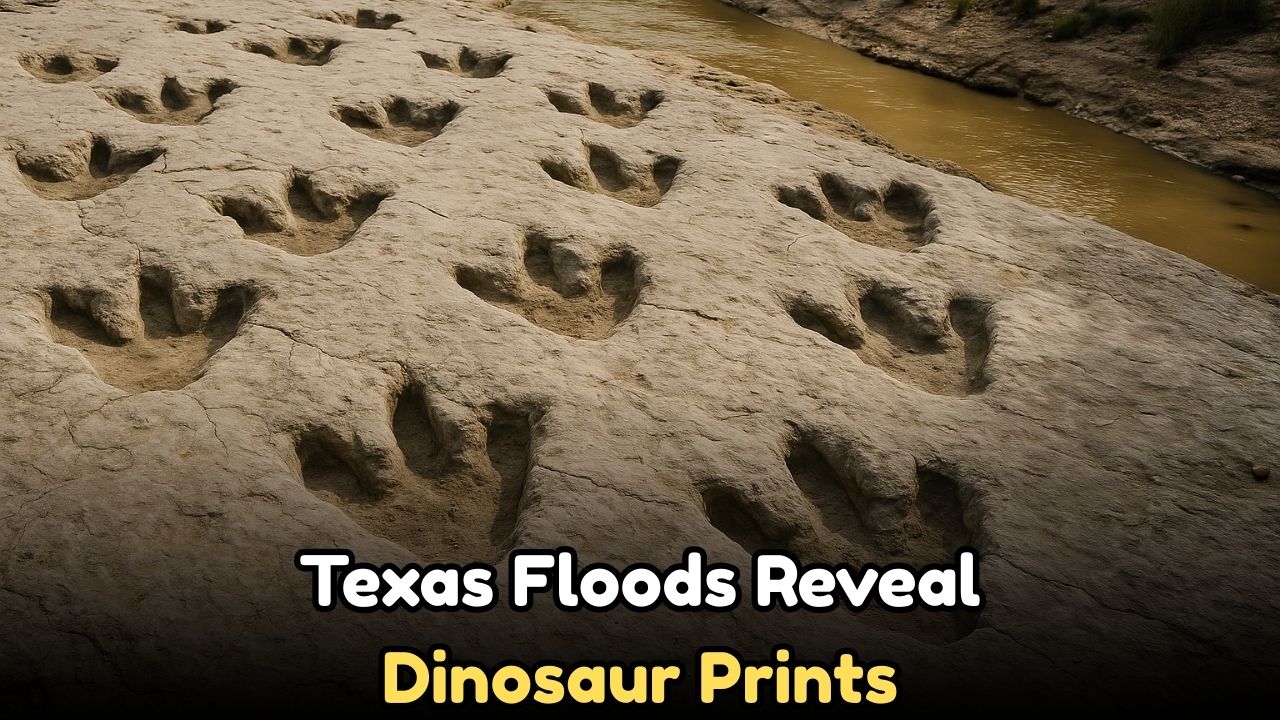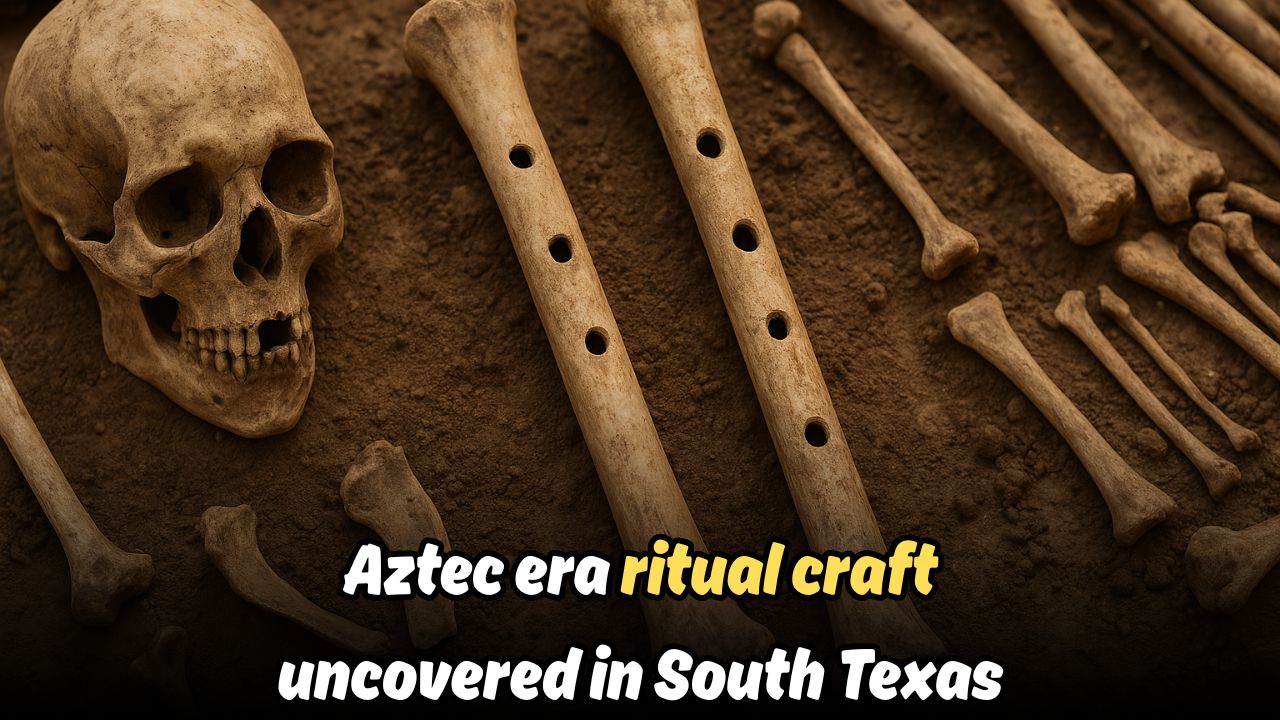115-Million-Year-Old Dinosaur Footprints – The recent floods in Texas have uncovered something that has stunned both scientists and the general public alike. Hidden beneath layers of mud and sediment for over 115 million years, massive dinosaur footprints have been revealed, offering a rare glimpse into prehistoric life. These 15 enormous three-toed prints belong to a species believed to be a giant Acrocanthosaurus, a predator that roamed North America during the Early Cretaceous period. The clarity and size of these footprints are astonishing, with some measuring over three feet in length. Paleontologists suggest that such discoveries not only prove the presence of these predators in the region but also provide key insights into their movement, behavior, and interaction with the environment. For decades, Texas has been considered a treasure trove of fossil discoveries, but this new find is rewriting history by confirming that such massive carnivorous dinosaurs once dominated this landscape. Locals and experts alike are calling it one of the most significant paleontological discoveries in recent times.
Discovery After Historic Floods
Heavy rains and subsequent floods in Texas recently washed away tons of soil, exposing previously buried rock layers near a dried riverbed. It was within these freshly exposed rocks that the dinosaur footprints were found. Experts believe the footprints were preserved in fine sediment that hardened over millions of years into stone. Such discoveries usually remain hidden underground, but unusual weather conditions made this rare exposure possible. Scientists rushed to the site as soon as the prints were reported, carefully documenting and preserving them before erosion or human interference could cause damage. Local communities have shown immense excitement, with many seeing this as a once-in-a-lifetime chance to witness history. Researchers now plan to conduct further excavations in the area to determine if more tracks or even fossilized remains could be present. This unexpected flood-driven discovery highlights how nature sometimes reveals secrets that have been buried for millions of years, reshaping our understanding of Earth’s prehistoric timeline.
Significance Of The Dinosaur Tracks
The footprints are not just fascinating because of their age and size; they also hold immense scientific value. Each three-toed mark, pressed deeply into the ground, indicates the power and weight of the creature that made them. Based on their structure, paleontologists have identified them as belonging to the Acrocanthosaurus, a predator that could grow up to 38 feet in length. The positioning of the tracks also suggests that the dinosaur was likely moving across a muddy plain in search of prey or water. Such trackways are invaluable in paleontology because they capture a moment in time, unlike bones which only show anatomy. From stride length to the depth of the impressions, scientists can estimate the dinosaur’s speed, weight, and even behavior. These Texas footprints are considered some of the most well-preserved examples ever discovered in North America. By studying them closely, experts hope to uncover new details about predator-prey relationships and how these massive creatures adapted to their environment.
A Window Into Prehistoric Texas
Texas has long been known as a hotspot for dinosaur discoveries, but this new find strengthens the state’s reputation as a paleontological goldmine. Over 115 million years ago, much of the region was covered by vast coastal plains and shallow seas, creating an ideal environment for dinosaurs to thrive. The Acrocanthosaurus, whose tracks have now been found, was one of the apex predators of its time. These footprints confirm that such massive carnivores actively roamed the area, shaping the prehistoric ecosystem. What makes this discovery even more special is the context—footprints like these are direct evidence of dinosaur activity, essentially a frozen moment in time. Unlike fossils that require reconstruction, tracks show the actual movement of creatures across the landscape. For Texas residents, this find is a reminder of the state’s deep prehistoric past, turning familiar flood-hit landscapes into sites of global scientific importance.
Preserving History For Future Generations
The discovery of these footprints has sparked conversations about preservation and heritage. Authorities and scientists are working together to ensure that the site is protected from natural erosion and vandalism. Plans are underway to possibly turn the area into an educational site or expand existing dinosaur track parks in Texas so that people can learn from these ancient imprints. Museums are also keen to document and replicate the tracks using 3D scanning technology, allowing researchers worldwide to study them without disturbing the originals. For school children, tourists, and researchers alike, these tracks are not just fascinating relics—they are windows into a world that existed millions of years ago. By safeguarding them today, future generations will be able to marvel at the scale and reality of creatures that once ruled the Earth. In many ways, these Texas dinosaur footprints are more than a scientific breakthrough; they are a timeless connection between humanity and Earth’s prehistoric history.






